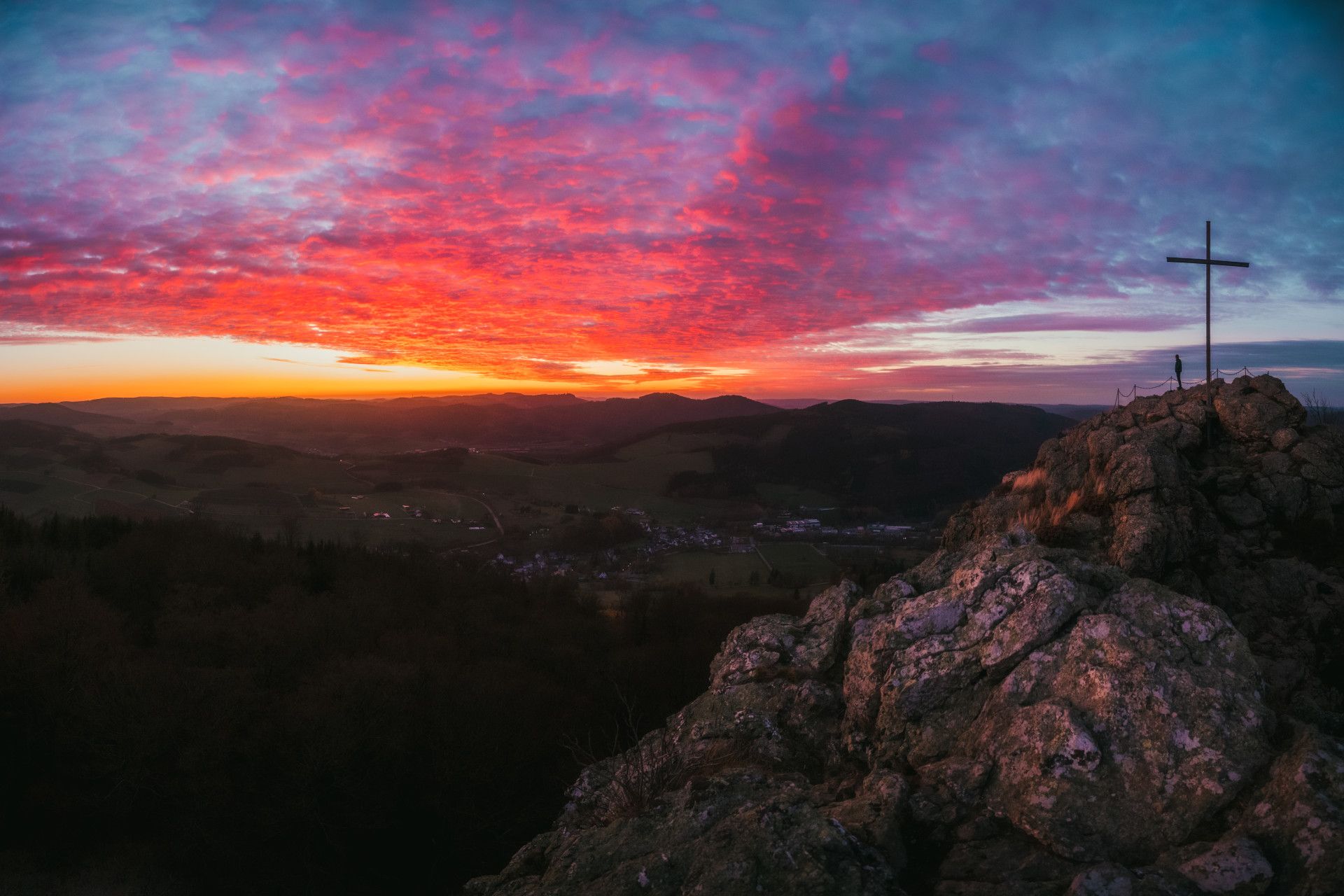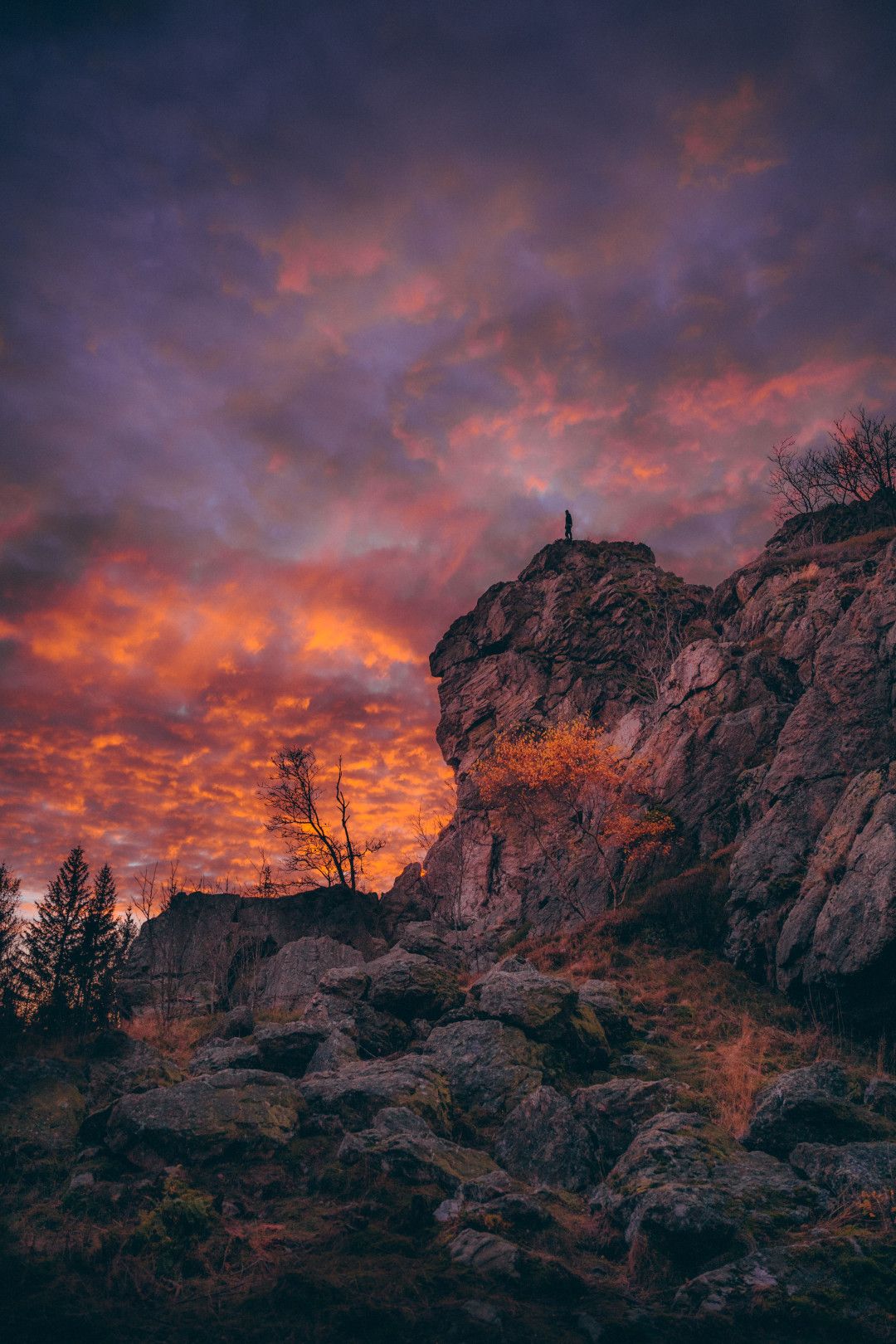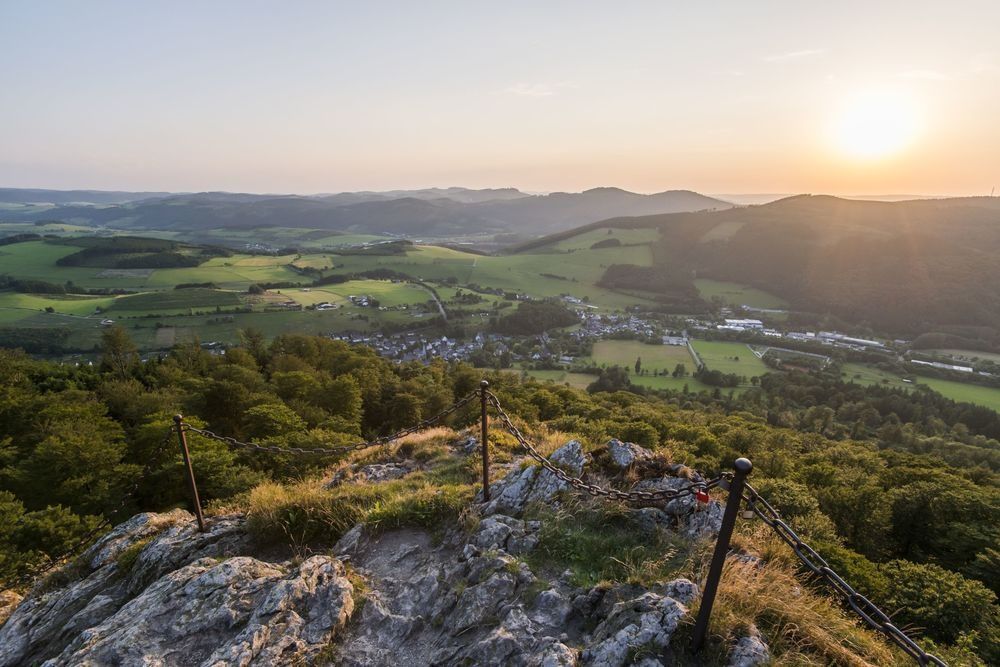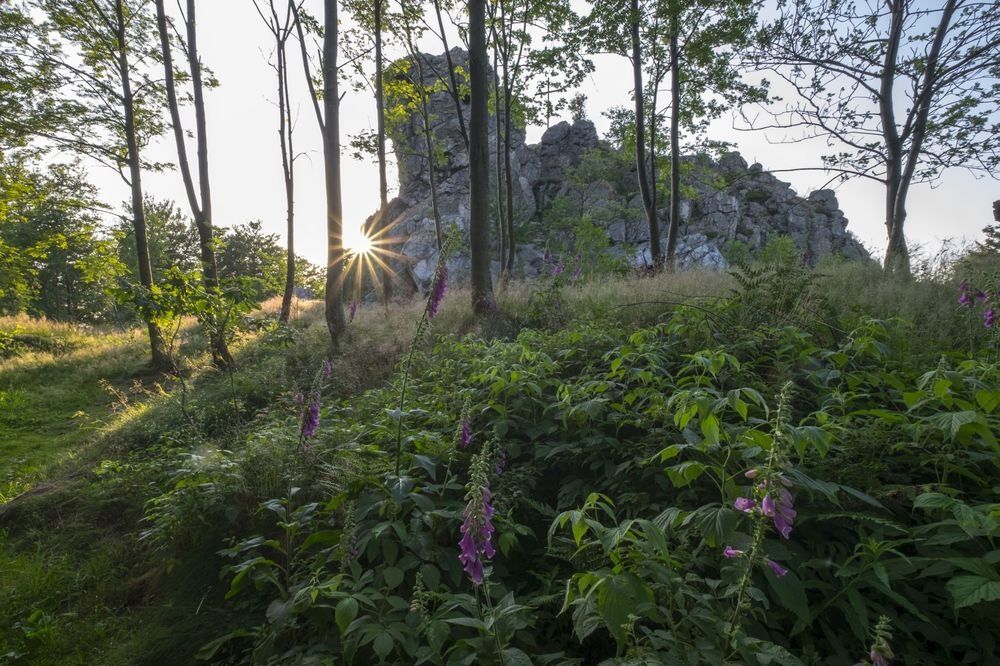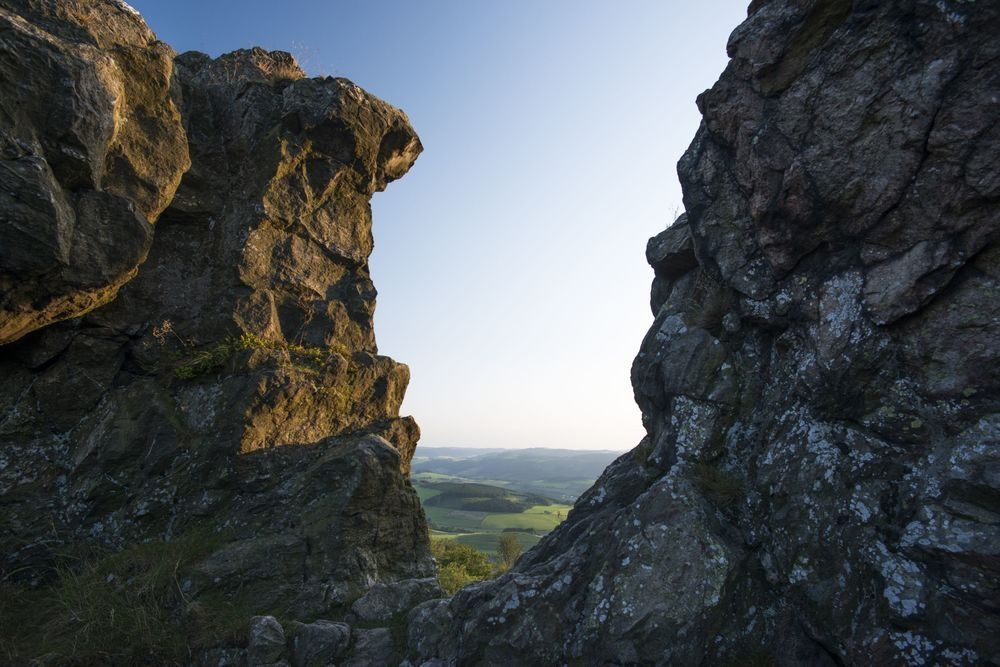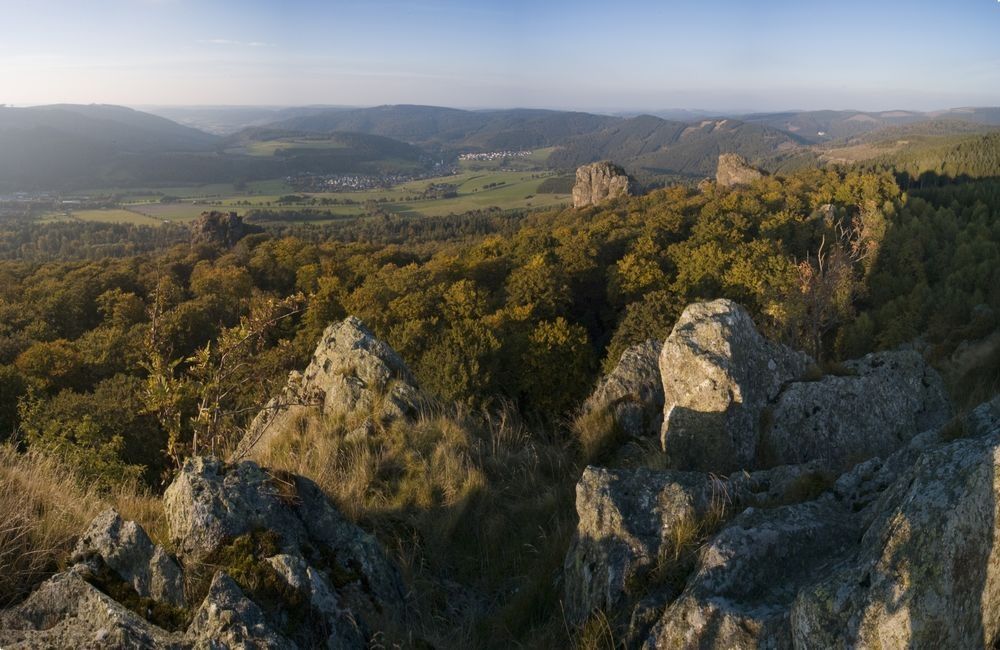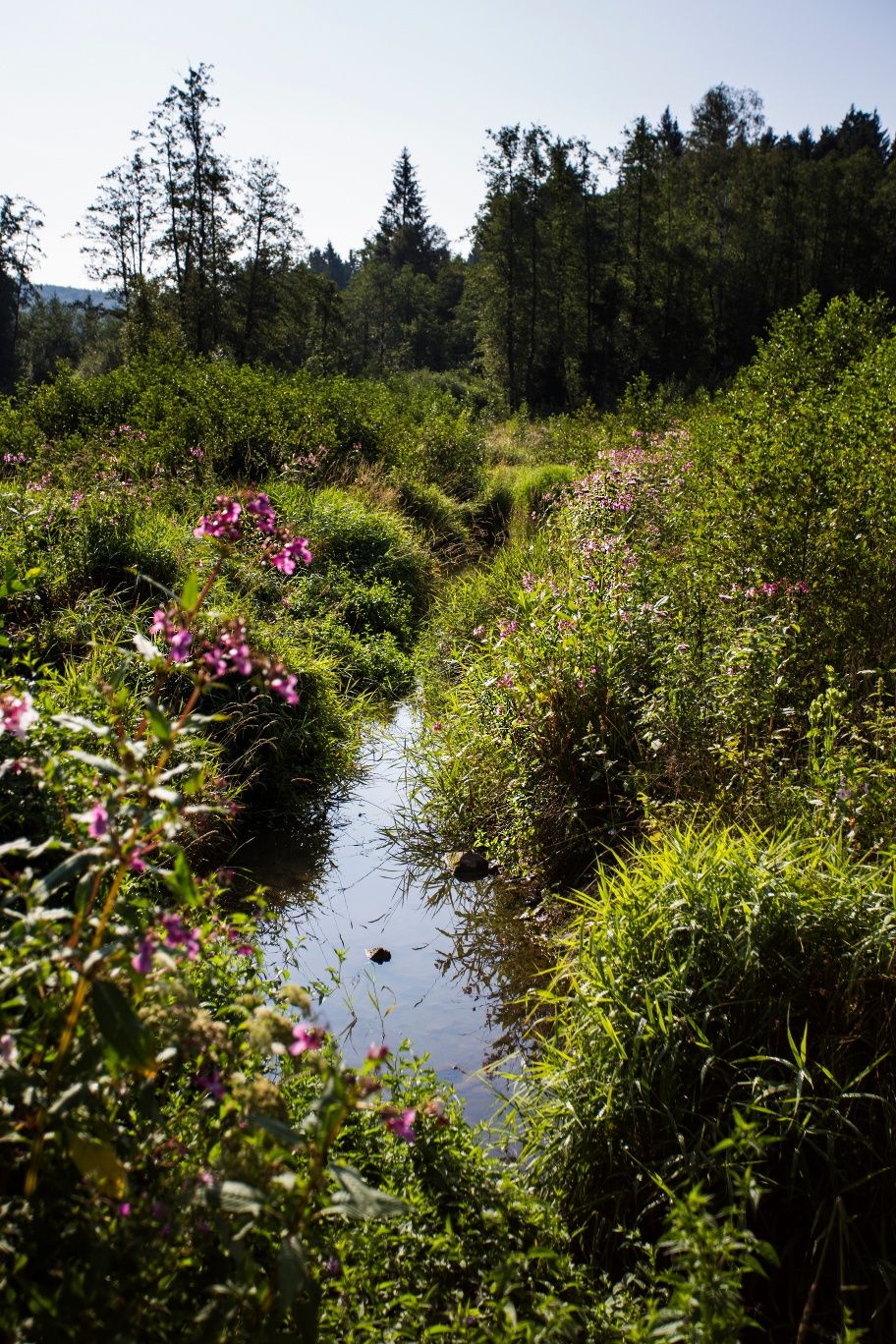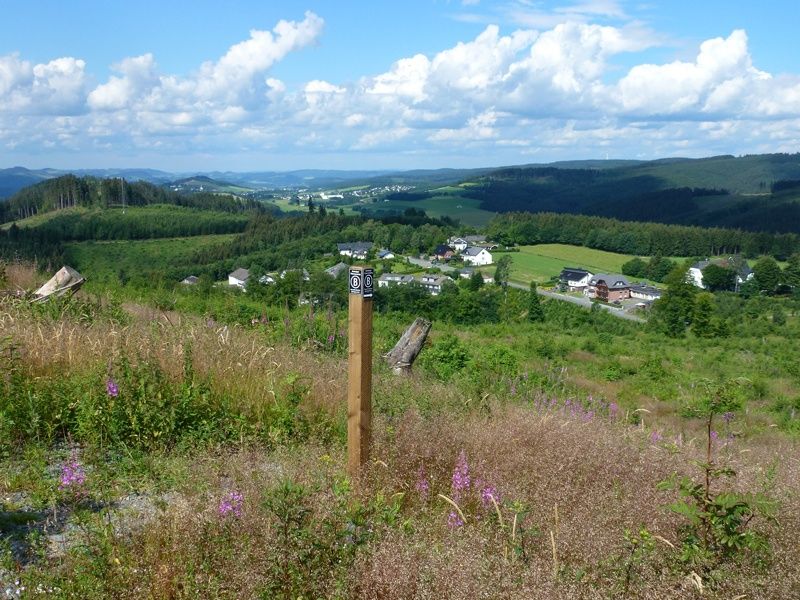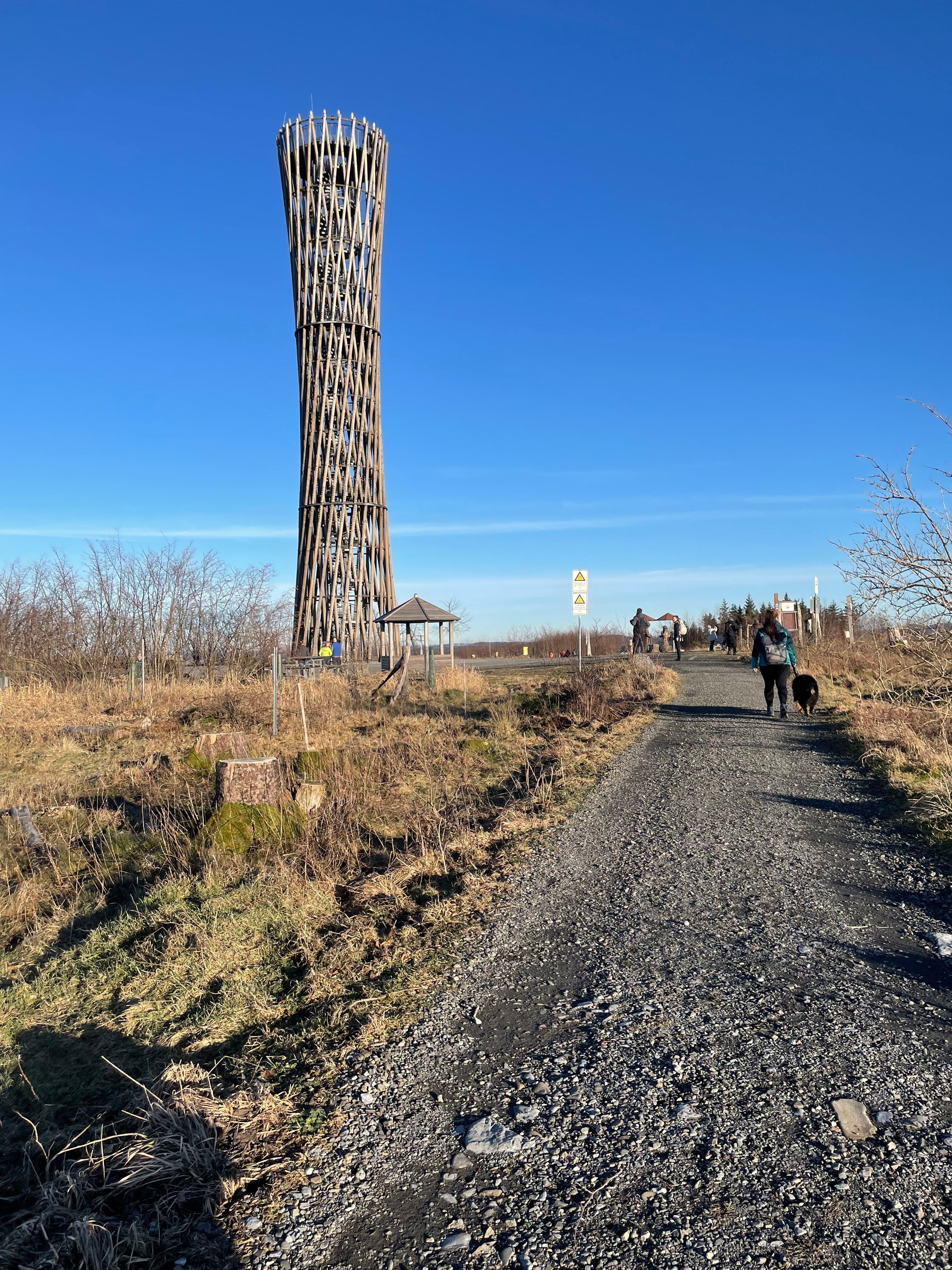Even for our ancestors, the stones were of strategic and cultural-historical importance. Early traces of settlement from prehistoric times show that the four mighty rocks were the corner bastions of a large rampart, which may even have enclosed a meeting place at a rock sanctuary and was used until the early Middle Ages.
Geology: The four to 92 m thick Bruchhauser Steine (Bornstein, Goldstein, Ravenstein and Feldstein) are among the most impressive geological phenomena in the Hochsauerland region and the entire Rhenish Slate Mountains. They are witnesses to a massive volcanic eruption at the bottom of the Devonian sea around 390 million years ago. They consist of the very hard volcanic effusive rock quartz porphyry (rhyolite) with inclusions of the minerals quartz and feldspar and mark the remains of a volcanic vent that penetrated the marine deposits of that time. In the millions of years that followed, the deposits were folded into a mountain range and slowly shaped out of their softer Devonian clay shale shell by weathering processes. The weathering-resistant volcanic rocks were largely preserved as "hard rocks". The extensive boulder debris fields with quartz porphyry boulders below the rock complexes on the L 743 south of the village of Olsberg-Elleringhausen also bear witness to the erosion.
However, the Bruchhauser Steine are not only a geologically rewarding excursion destination. As a retreat for arctic-alpine plants, they are one of the rare sites of plants that are no longer native to us (so-called "relict species") from the Ice Age. Only here - under extreme climatic conditions - have they been able to survive to this day and have not been displaced by warm-age plants. The "Bruchhauser Steine" are home to important plant occurrences (alpine goose cress, hawkweed) as well as a peregrine falcon breeding site.
Age of the rocks: Quartz porphyry (rhyolite): Middle Devonian, Eifel stage (around 390 million years ago)
In April 2017, the Bruchhauser Steine were designated a National Natural Monument - the first in NRW.
The Bruchhauser Steine were awarded the title "National Geotope" by the Academy of Geosciences in Hanover in 2006.
Vacation opening times: During the Christmas vacations, the Bruchhauser Steine are open daily from 11:00 - 16:00. During the Easter vacations, the Bruchhauser Steine are open daily from 10:00 - 16:00.
As soon as public holidays fall on a Monday, the Bruchhauser Steine are also open then.
(Texts: Tourism Brilon Olsberg)
